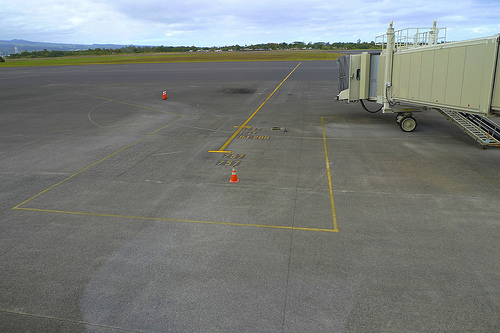On Monday US President Barack Obama unveiled a $3.7 trillion budget plan. Within the 10-year blueprint is also a juicy bit directly affecting US airports as according to some airport industry groups, Obama could cut $1 billion out of the government’s $3.5 billion fund for airport construction grants. So what does that mean for US airports?
Medium and large airports:
Some news sources claim that the budget cuts would mainly affect medium and large airports as the Obama administration would allow those airports to rely more heavily on other income sources (read: passenger and airline fees). This newspaper for example argues that Atlanta’s Hartsfield-Jackson International Airport (IATA: ATL) will be one of the affected ones. Another one writes that Dallas/Fort Worth International Airport (IATA: DFW) will be affected. However, airport spokesman David Magana said in the same article that DFW received only $9 million from the program last year and that the airport could find other revenue to replace it.
Small airports:
The Obama budget proposes $3.1 billion for “competitive airport grants” as part of a $50 billion infrastructure package targeted at “roads, railways and runways,” according to the American Association of Airport Executives. This means smaller airports may receive more grants to improve their infrastructure possibly letting them avoid raising passenger and airline fees making them more competitive as a result. This will be a move towards leveling the playing field against the big guys. Therefore, if it works out, some of these small airports could benefit in additional traffic from larger, more expensive airports.
The budget also includes a few other items that are affecting US airports as USA Today reports:
- $1.24 billion, an increase of more than $370 million from 2010, for the so-called Next Generation Air Transportation System, a satellite-based air-traffic-control system that would start deploying in stages in 2012.
- $82 million to install 275 additional advanced scanning machines at security checkpoints, with a goal of having 1,275 in airports by the end of 2012.
- $173 million for the Essential Air Service, which subsidizes airline service to small communities.
[Photo from Flickr – Some rights reserved by j808armada]

